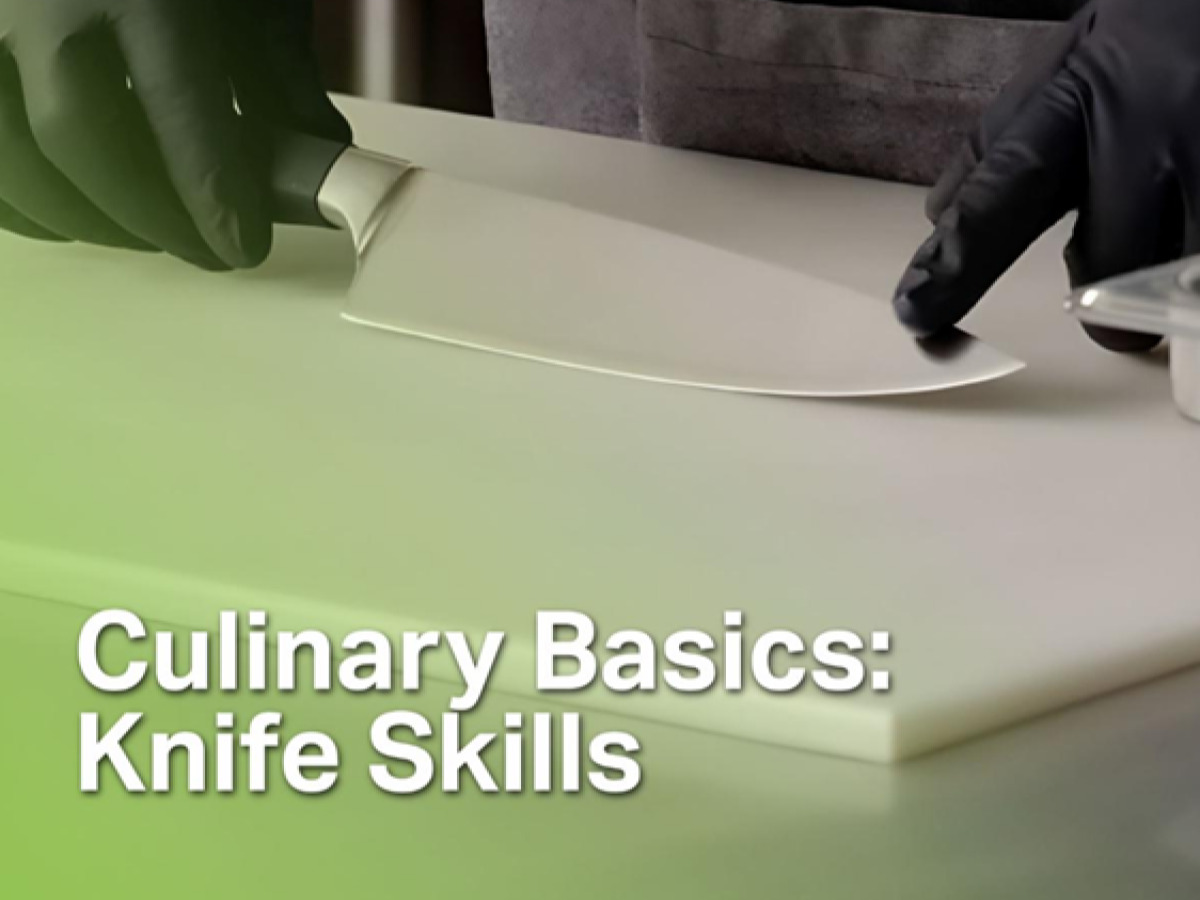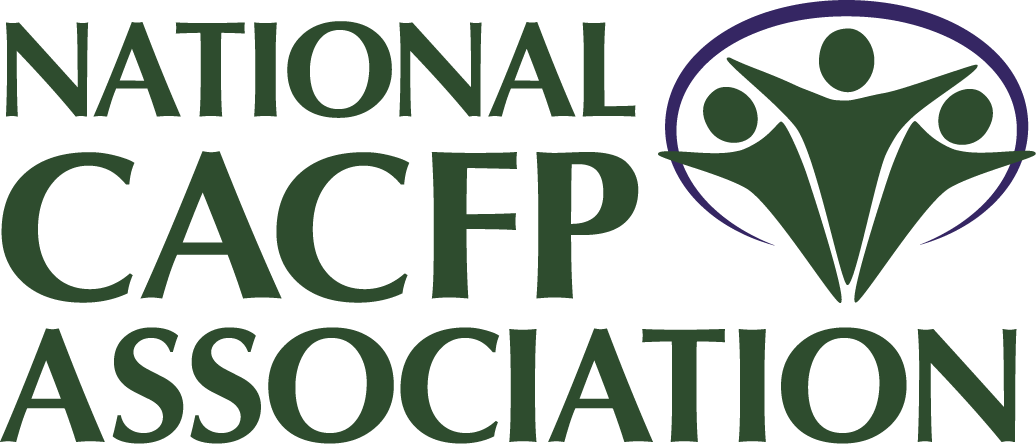Culinary Basics: Knife Skills
Institute of Child Nutrition (ICN)
April 8, 2025

Ensuring maximum safety in the kitchen is crucial, and following basic knife guidelines is essential for everyone’s well-being. Once knife safety is mastered, this essential skill can lead to an increase in scratch preparation. Our partners at the Institute of Child Nutrition outline the importance of knife safety, skills, maintenance, and storage.
Knife Safety
Knife safety should become part of your program’s safety culture. Some basic guidelines for using knives safely include:
- Always use sharp knives. Dull blades cause more accidents because they are harder to work with and require more pressure. You can determine if your knife is sharp if it glides through a tomato easily.
- Use National Sanitation Foundation (NSF) approved cutting boards and place an anti-slip mat or damp towel between the work surface and the board to prevent the board from slipping or moving while you work.
- Wash knives immediately after use. Do not place knives in a sink or soapy water where they cannot be seen and accidentally grabbed.
- When using a knife, stay focused on what you are doing, keeping your eyes and attention on your knife.
- Use a knife for its intended purpose, never for opening cans, boxes, jar lids, or prying frozen items apart.
- If a knife is dropped, step out of the way and do not try to catch it.
To help remember the key points to knife safety, use the acronym SAFETY.
- Securely hold the knife
- Anchor cutting boards
- Fingertips curled back like a claw
- Eyes on the knife
- Take your time
- Yield to falling knives
Knife Skills
Investing time in honing your knife skills not only enhances safety for yourself but also boosts efficiency.
- Start with a work surface that is near waist level.
- Line the cutting board on an anti-slip mat at the edge of the work surface.
- To reduce fatigue, position your body in an athletic stance (feet shoulder width apart and knees slightly bent).
- Never work over a garbage can. If the food slips from your hand, it is wasted. Instead, always work over a clean and sanitized work surface with a pan ready for the scraps.
- Properly holding a knife helps control its movement. The Culinary Quick Bites Knife Skills: Knife Grips & Food Grips resource identifies the parts of the knife and provides infographics that demonstrate how to hold a knife properly.
Knife Maintenance
To maintain your knife, proper storage of knives is an important part of maintaining a safe work environment and the tool’s integrity.
- Never wash knives in the dish machine.
- The heat from a final rinse cycle can weaken the blade, causing it to dull faster.
- Harsh dish detergents and heat can change the chemistry of the metal of your knife and cause rust.
- Hand wash knives in warm, soapy water using a mild dish soap.
- Wash between the metal and handle to prevent food build-up.
- After washing the knife, sanitize and air-dry it in a specified area for drying sharp tools.
- Sharpen knives with a coarse, medium, or fine sharpener. The Culinary Quick Bites Knife Skills: Knife Care and Maintenance resource provides methods for sharpening knives.
Knife Storage
Each site should have designated storage locations for knives and sharp tools. Here are a few things to consider when selecting storage locations:
- Store knives in a knife rack or a designated knife drawer marked accordingly.
- Sharp objects, including knives, should not be loosely stored in drawers.
- The storage area should be close to workstations, minimizing movement with sharp objects.
- Always carry knives by the handle to the side of the body with the blade pointed down.
- Place knives on a surface rather than handing them directly to another person.
For more information, read the Institute of Child Nutrition’s April Mealtime Memo.
